
34 minute read
The Green
They were the Presidential Inauguration memes seen ’round the world: Vermont Sen. Bernie Sanders looking decidedly Bernie in a Burton parka and pair of notable mittens. Alumna Jen Ellis ’00, crafter of those instantly famous mittens, has turned the viral moment into a force for good. See page 8.
YOU SHOULD KNOW
Advertisement
For us, we had to be, and will continue to be, a sport of action as it relates to social justice, diversity, equity, and inclusion. I think what is striking to people is—with the perception of what NASCAR was—that if NASCAR can do it, boy, can everyone do it.”
—Steve Phelps ’85, president of NASCAR Alumnus Phelps made a virtual return to campus for the annual Hoffman Family Business Lecture, discussing NASCAR’s efforts to combat racism and build a more diverse organization. See page 55.
NATURE’S BALM
A UVM study of parks and natural areas in Greater Burlington found a significant uptick in usage during the COVID-19 pandemic. Among the findings: 26 percent of people visiting parks during early months of the pandemic had rarely, or never, visited nature in the previous year. Read more: go.uvm.edu/parks
0%
In February, the UVM Board of Trustees approved President Garimella’s proposal to freeze tuition for a third consecutive year. In addition, the board also endorsed freezing room-and-board charges and reducing student fees by 2.2 percent for the next academic year.
#10
PEACE CORPS PROPS
The UVM-Peace Corps connection abides. In 2020, the university ranked No. 10 among Peace Corps Prep schools.
PROFS OF INFLUENCE Two University of Vermont faculty—Andrea Villanti and William Copeland, both professors of psychiatry—have been named to a list of the world’s most influential researchers. Researchers on the list, which is based on the number of times their published studies have been cited by other researchers over the past decade, are in the top 1 percent of all scholars whose work has been cited.
2022
LAUNCH
In the works, a sixty-four-foot hybrid-electric aluminum catamaran to replace the aging Melosira as UVM’s classroom/laboratory on the waters of Lake Champlain. The innovative vessel is designed by Chartwell Marine and under construction at Derecktor Shipyards. Read more: go.uvm.edu/newboat

STAYING IN THE GAME
The challenge of being a student-athlete rose to a new level during the pandemic. See go.uvm.edu/catplay for a photo/video story documenting one weekend in February, as Catamounts in multiple sports balanced the rigors of training and competition with maintaining safe practices in the time of COVID-19.
| THE GREEN
Keeping Our Balance

UVM in the Pandemic Year
CAMPUS LIFE | As this issue went to press in mid-April, the UVM community was within a month of closing out academic year 2020/2021, two semesters of unprecedented challenge. Although COVID-19 cases among the student body increased during the spring semester, the outlook remained bright to complete the year as a national higher education leader in maintaining on-campus learning throughout the crisis.
Soon after spring 2020 instruction shifted from in-person to remote last March, President Suresh Garimella formed the UVM Strong Fall 2020 Advisory Committee. Chaired by Gary Derr, vice president for operations and safety, the group of staff and faculty leaders drew on expertise across campus, also working in sync with state and city officials.
Courses were delivered in a variety of modes: in-person with students and professors masked and socially distanced; remotely; and a hybrid of the two. Students signed onto the Green and Gold Promise, pledging safe and responsible behavior. They also, to great degree, adhered to regular testing for the virus, with trips to the Davis Center for a nose swab sample becoming a familiar, if not fond, part of student life.
On a visit to UVM in October, part of a national tour studying best practices in higher education’s COVID-19 response, Dr. Deborah Birx praised the frequent testing at the cornerstone of UVM’s plan.
Though it was far from college life as usual, UVM staff worked hard to create alternate ways—such as an outdoor skating rink and fire pits encircled by Adirondack chairs dotted around campus—to foster safe activity and social connection. Catamount varsity teams remained in the game for the most part, even as some fall sports shifted to winter or spring, leading to some incongruous sights, such as a cross-country race on the snowy campus in February.
On March 14, as positive test numbers ticked up, President Garimella wrote to the campus community encouraging perseverance and keeping eyes on the promise of a not-too-distant return to simpler ways.
“Finally, let us not forget, the UVM community’s performance remains among the best in the nation, thanks in huge part to the cooperation and admirable fortitude of our students. We are at a trickier juncture with COVID than it may appear, and the next few weeks are especially important,” President Garimella wrote. “We will continue to try our best—you have my word on that. But we will also need your understanding as we continue, daily and hourly, to chart uncharted paths.”
Plans were also announced in March for a full schedule of courses and on-campus experience during the fall 2021 semester.
THEN & NOW
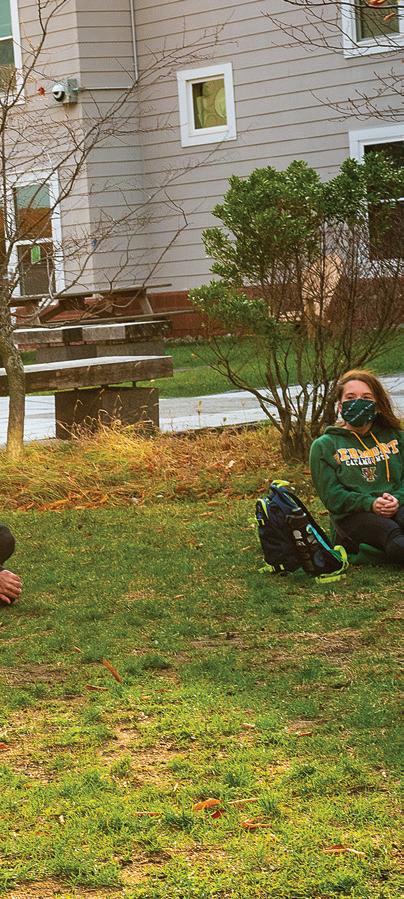
In last summer’s edition of the magazine, we shared multiple stories of the UVM family working to address and ease the threat of COVID-19. Some updates are in order.
Dr. Halleh Akbarnia MD ’98 wrote about her moving experience with a particular COVID patient in her work as a suburban Chicago ER physician. In March, she gave that same patient, Michael Catania, the shot with his second vaccine dose. “To me, working this side of giving vaccine is about the biggest therapy that I could have. Giving him his shot was the ultimate,” Akbarnia says.
Last spring, Estee Dilli ’15, senior associate scientist at Pfizer, was part of the international team racing to develop vaccines. A year later, Dilli describes the sense of relief as people worldwide began to get inoculated with the vaccines from Pfizer and other companies. As she received phone calls and texts from family and friends with thanks for her role in helping bring about this watershed moment, Dilli says, “My response was always the same, and that was thanking them for trusting science.” Read more:
go.uvm.edu/pandemicyear

Remote Class Goes Hollywood
Top cinematographer guest stars in film course
FILM | More than four decades after his two years as a UVM undergraduate, Robert Richardson returned to a University of Vermont classroom during fall semester 2020. Much had changed. In the mid-1970s, he was a young man with a budding interest in movies, signing up for every film course he could find. Today, he’s one of the world’s great cinematographers, the go-to director of photography for film directors such as Quentin Tarantino, Oliver Stone, and Martin Scorsese.
Fall 2020 marked the debut of a new course, Film and Television Studies 131: Cinematography and the Films of Robert Richardson, led by Professor Hilary Neroni. For both teacher and students, an undisputed highlight came on October 29, when Richardson’s face—long white hair and beard—joined the familiar Microsoft Teams grid, as he fielded the class’s questions for ninety minutes.
Also returning to a UVM class this semester after a long absence, Professor Emeritus Frank Manchel, a transformative influence on Richardson during his time at the university. The Richardson-Manchel relationship is a long story, detailed in Vermont Quarterly in 2012. CliffsNotes version: Richardson enrolled at UVM in 1973 to study oceanography. But, enthralled by an Ingmar Bergman film series, his aspirations shifted. The world lost an oceanographer and gained a cinematographer, as Richardson took every class he could with Manchel, a pioneer in studying film as an academic discipline. Eventually, wanting to focus on the practical aspects of filmmaking, Richardson transferred to the Rhode Island School of Design, later studying cinematography at the American Film Institute. But in 2005, Richardson and Manchel re-connected and have been “talking film” ever since via near-daily email exchanges.
Neroni and Manchel had long discussed the possibility of a course on Richardson’s films. He’s a three-time winner of the Academy Award for Cinematography (JFK, 1992; The Aviator, 2005; and Hugo, 2012). After Neroni developed the course and offered it for fall 2020, plans took a pandemic twist as the class shifted to remote delivery. Silver lining, the format allowed Manchel to be more deeply involved with teaching, effectively splitting the class with Neroni for the first several weeks. Manchel regularly sent Richardson questions to react to, which were then posted during classes. (The professor emeritus stepped aside from teaching part way through the semester after suffering a mild stroke.)
Though an in-person visit from Robert Richardson was the original plan, and hopes are that will happen in a future semester, the feature attraction came when the cinematographer logged on via Teams for a questionand-answer session from his home.
Well-versed in his work, students asked Richardson about everything from technical considerations when lighting scenes to the utility of a graduate degree in film to the challenges of coping with anxiety while doing creative work. Richardson was open, kind, often funny and occasionally mildly profane with his answers—like the coolest uncle imaginable.
As Neroni and Manchel developed the course, Richardson was generous with his time in suggesting films, readings, and other material. Neroni says, “It was incredibly rewarding to work with him. Even just through the interaction about the course, I can see why directors love to collaborate with Richardson.”
| THE GREEN
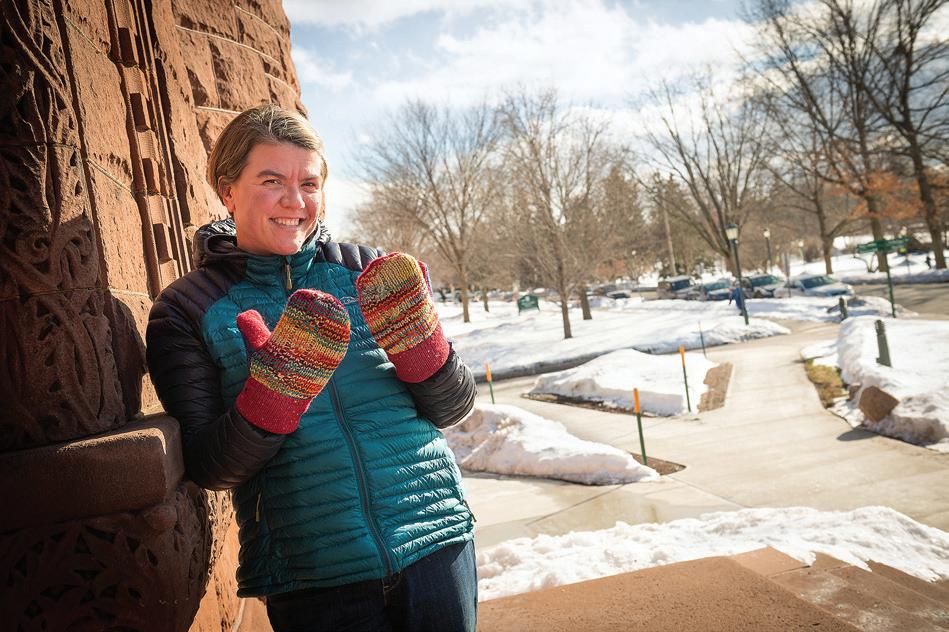
More than a Meme
Jen Ellis’s favorite meme is the one her friend Vikki Day created for her in honor of Ellis’s love for Downton Abbey: Sen. Bernie Sanders and the Dowager Countess of Grantham at tea. You know the blockbuster meme of January’s Presidential Inauguration—Vermont Sen. Bernie Sanders sitting cross-legged on a folding chair in unlikely places—and you know the distinctive mittens that just kind of made the whole thing work. But you might not know that the creative force behind those mittens is Jen Ellis ’00, a Vermont elementary school teacher, third-generation UVM alumna, and wife of UVM English professor Elizabeth Fenton.
The path to the platform at the Capitol began when Ellis sent the pair of her handmade, upcycled mittens to Sanders as a gift of gratitude and support after he fell short in the 2016 Democratic presidential primaries. “I’ve voted for him since I was eighteen,” Ellis says. “I’ve always supported him and liked his policies. I gave him those mittens as a shout out to say, ‘Hey, I still think you’re awesome.’ He’s actually been wearing them for a few years.” (Ellis doesn’t make the mittens anymore, but she estimates she’s made a few hundred pairs over the years, mostly given as gifts or sold at craft fairs.)
After the Bernie memes took off on January 20, Ellis had to reset a forgotten password to log in to her Twitter account, which she hadn’t used in a year. She found 22,000 new followers and started leveraging the instant fame for fundraising almost immediately. She made three new pairs of mittens within days, two of which went to local charities to auction. One pair went to Passion for Paws dog rescue and the other raised more than $44,000 for Outright Vermont, an LGBTQ+ youth support organization.
Going forward, Vermont Teddy Bear Company will manufacture the mittens and donate a portion of the proceeds to Make-A-Wish Vermont. “I felt it was important for a portion of the sales to go to charity,” Ellis says. “Many nonprofits have lost fundraising opportunities due to the pandemic and this was an opportunity to help them make up for some of what they have lost.”
Ellis herself loves teaching too much to leave it for a mitten business—but she is writing a book about the experience. “The working title is ‘Generosity Brings Joy,’ and it brings us right back to the root of this whole thing. I gave someone a simple gift; I forgot about it; and it brought an enormous amount of joy when we needed it in this pandemic,” she says. “If we could just help each other and be a little bit more kind, and a little bit more generous with our own gifts, I think the world would be a better place.”

Statehouse Pioneers
Alumnae break barriers in Montpelier
VERMONT | The election of November 3, 2020, marked a significant step in Vermont toward a truer democracy that hears all voices. For the first time ever, Vermonters elected a woman of color to the State Senate, Kesha Ram ’08, and an openly transgender woman to the House of Representatives, Taylor Small ’16. On January 6, the alumnae and close friends were sworn into Vermont’s General Assembly together.
“We’ve just had this long, beautiful friendship and I think there is something special about this year. People that I know, that I run in circles with and that feel so underrepresented in politics, we’re all going to the Statehouse together,” says Ram, who is of Jewish and Indian heritage.
Having served eight years as a representative for Burlington’s University District and the Hill Section—beginning at age twenty-two—Ram is no stranger to the game in Montpelier. She even introduced the first environmental justice bill to the House before graduating from UVM, where she earned bachelor’s degrees in natural resource planning and political science.
In the other chamber, Small—Winooski’s newest representative and a graduate of UVM’s human development and family studies program—has been a known force in her community and an active grassroots organizer for some time. This will be the first time she takes the oath of office and a seat in the General Assembly.
Ram kicked her campaign off in January, unaware at the time that a pandemic was coming just around the corner. Though the campaign plan was disrupted, Ram and her team—including UVM students Skyler Nash ’21 as campaign manager and Haley Sommer ’21 as communications director—continued pushing forward and connecting remotely with community members.
Alternatively, Small had no intention of tossing her hat into the ring, until a retiring Winooski representative called during the summer to see if she’d be willing to campaign and replace her. For a town like Winooski that celebrates all its residents—New Americans and refugees, queer and trans people, the elderly, and growing young families—twenty-six-year-old Small was the right person for the job.
“That was the exact push that I needed to say, ‘I don’t have to wait to get into politics. I wouldn’t have to wait my turn to have a seat at the table. I can go for it right now,’” she says.
She immediately turned to Ram for advice and an opinion about entering the race. “I wanted the real truth, and that is something I appreciate about Kesha, that she is always going to handle the truth head on and is not looking to mince words about it.” Within twenty-four hours of being asked, Small had her mind made up to go for it.
As they begin work in virtual Montpelier, both women underscore the necessity for young people to see themselves in their representatives, to see that every voice—including their own—matters.
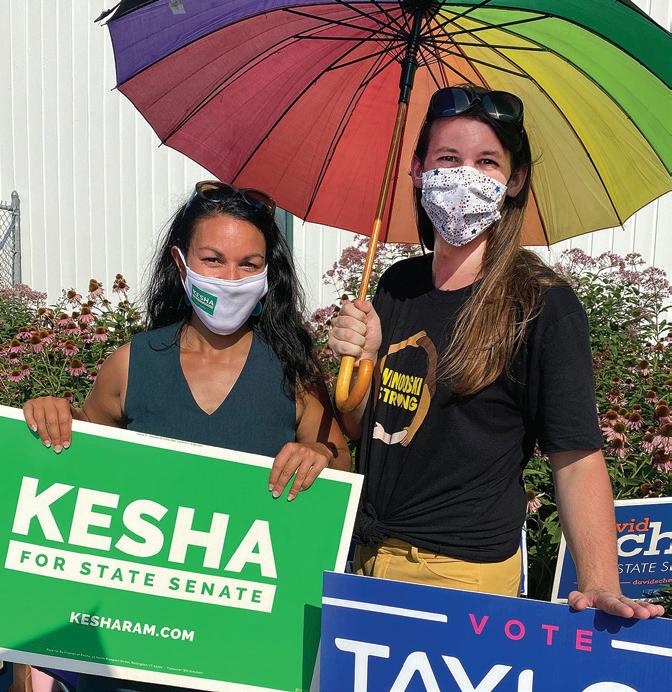
With mutual support through the challenge of pandemic-year campaigning, friends Kesha Ram and Taylor Small each earned a ground-breaking seat in the Vermont Statehouse.
| THE GREEN
CELEBRATING DIVERSE VOICES
The Davis Center’s fourth floor, a student hub at the heart of campus, took on an important new dimension in February with the unveiling of a permanent exhibit space dedicated to celebrating diverse voices at UVM. The space, designed as a place where stories can be shared and accomplishments can be lauded, opened with a display case that honors the work, and struggles, of ten Black and African American alumni, faculty, and honorary degree recipients with photographs, biographies, and historical artifacts.
While Black History Month “is a time to applaud what has been achieved, it is also an occasion to reflect on the challenges, injustices, and strife encountered by those in the past, and to energize our efforts to build a better future,” said President Suresh Garimella in a virtual unveiling event on February 10. The president dedicated the space to Wanda Heading-Grant ’87 G’03, vice president for Diversity, Equity and Inclusion (DEI), for the “meaningful and lasting change” she’s created in her thirty-seven years at the university. The alumna and longtime administrative leader at UVM moved on to Carnegie Mellon University this April, becoming that institution’s first vice provost for DEI.
The Davis Center exhibit is one of several universitywide initiatives proposed by President Garimella to combat racism, promote social justice, and foster greater civic responsibility in the wake of racial unrest that sparked with the killing of George Floyd in 2020. Paul Deslandes, professor and chair of history, headed the exhibition committee that brought the project to life.
Virtual tour of the exhibit: go.uvm.edu/diverse
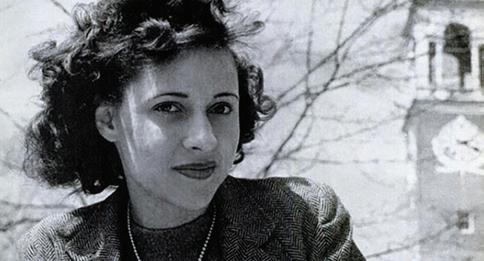
Crystal Malone ’47 and her UVM Alpha Xi Delta sorority sisters pushed back against Greek system segregation. Malone, who passed away in February, is among the pioneers and leaders featured in the new exhibit.
At Work and Play
HEALTH SCIENCES | Alyssa Oviedo understands what it means to find and follow one’s passion. The health sciences/emergency medicine junior started dreaming about a career in health care about the same time she began kicking soccer balls, and she’s been doing both ever since.
A licensed emergency medical technician, Oviedo did her EMT training at UVM and she volunteers with Essex Rescue. “I learn so much every shift about health care, from clinical things to bedside manner,” she says. “When someone calls for an ambulance it can be a scary experience for the patient and their family. Being able to help them feel better is so rewarding.”
Oviedo is a midfielder for the Catamount women’s soccer team, where she brings experience that includes playing for the Dominican Republic U-20 national team. Off the field, she’s active in the UVM Student-Athletes of Color affinity group and UVM She Roars, an initiative to foster gender equity in sports. An athletic scholarship and a Trustees Scholarship, awarded for outstanding academic performance, are critical to supporting Olviedo’s education and multiple pursuits.
PETE ESTES
STUDENT PROFILE |

| THE GREEN
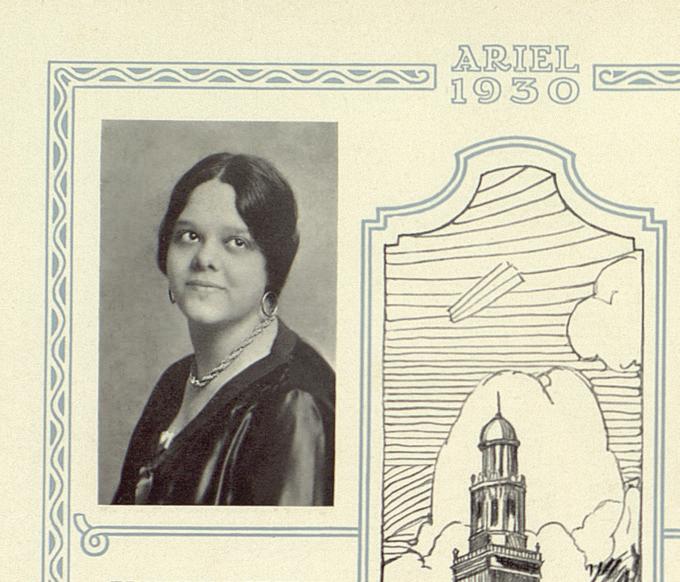
The first Black woman to graduate from UVM, Edna Hall Brown ’30 eased the path for future generations of students through her scholarship bequest.
Legacy of a Quiet Trailblazer
STUDENT SUCCESS | “Here’s a maid from sunny Baltimore. From the way she reads Latin we think they must speak it down there… She expects to enter U.V.M. next year. We know she’ll make good.” So reads the St. Johnsbury Academy yearbook entry for Edna Hall Brown, who spent a year at the preparatory school in Vermont’s Northeast Kingdom before enrolling at UVM in 1926. Brown, the first-known Black woman to graduate from UVM, did, indeed, make good.
After capping her standout academic career at UVM with a bachelor of science degree, Brown went on to earn a master’s from the Teachers College at Columbia University in 1932. From there, she returned to her native Baltimore and taught the sciences— especially mathematics and physics—in the public school system until she retired as head of the science department at Dunbar Senior High School in 1970. As a teacher, she remained a rigorous student herself, pursuing additional post-graduate study.
Teaching was not the only way that Brown invested herself in her community. She was active in the historic Madison Avenue Presbyterian Church and a dedicated member of the DuBois Circle for sixty-two years. The DuBois Circle was founded in Baltimore in 1906 as a women’s auxiliary to work alongside DuBois and the members of the local branch of the Niagara Movement in their fight to address the social, political, and economic injustices faced by Black Americans.
Upon her death in 2000, Brown furthered a family tradition of passing on some of her hard-earned wealth to relatives. But she also did something new: she left a large portion of her estate to help minority students go to college. Half of those resources went to the United Negro College Fund, and half came to the University of Vermont, “to be used for their scholarship fund for minority students.” Recognizing the ongoing need for such support, the university used the gift to create the permanent Edna Hall Brown Scholarship Fund, a fitting legacy for this unassuming trailblazer.
Maya Dizack ’20 is among the students aided by the Edna Hall Brown Scholarship and other support. A committed environmental scientist and advocate, Dizack was moved to learn the story behind the Edna Hall Brown Scholarship that helped make her UVM education possible.
“I’m smiling right now knowing that this support came from a woman of color who lived a really wonderful, intelligent, and humble life,” Dizack says. “For me, the funding validated a sense of belonging—somebody actually believed in the values that I hold. Knowing that someone else with similar identities had a similar story and went forward and succeeded—that is so inspiring.”
BENEATH GREENLAND
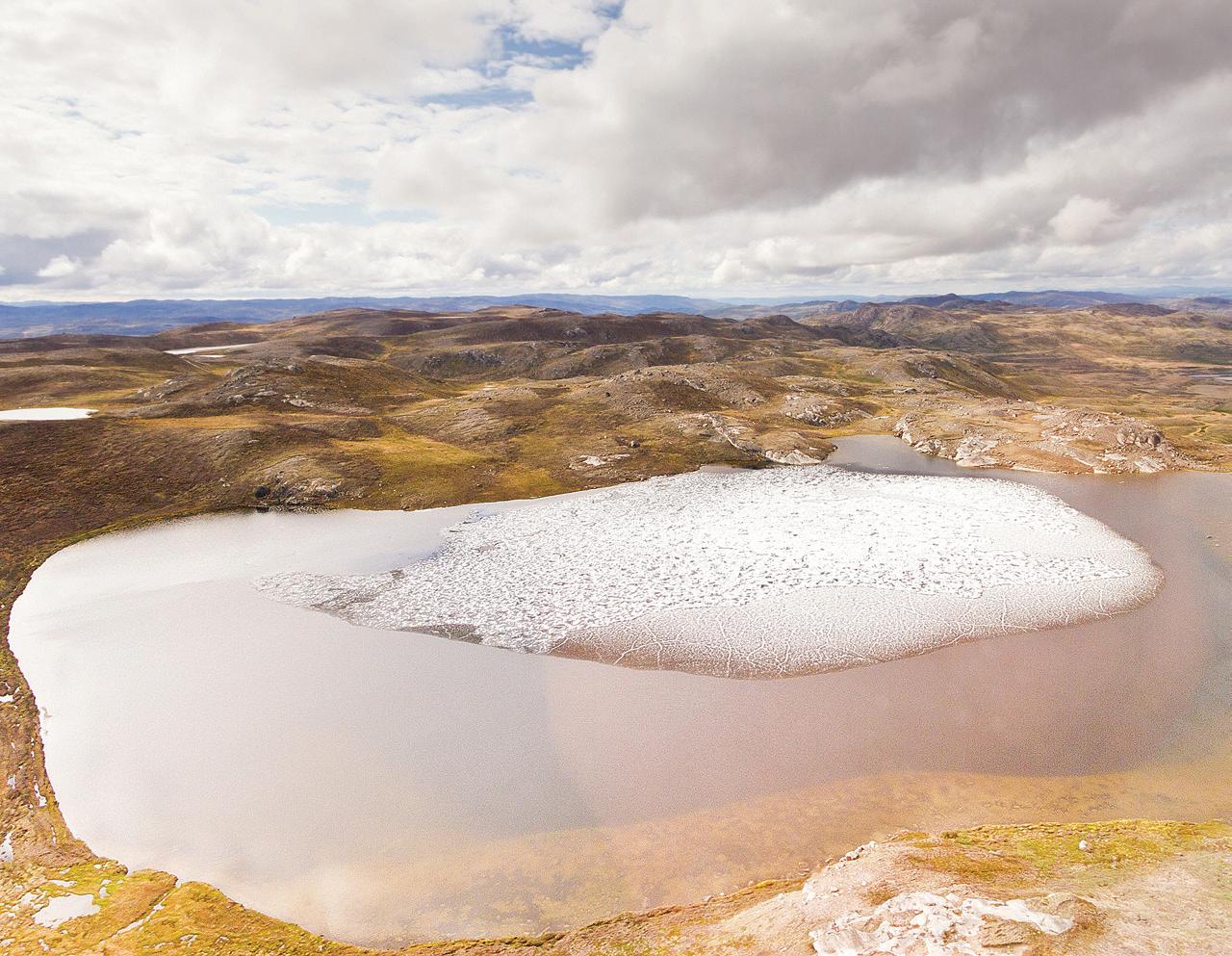
GEOSCIENCES | In 1966, U.S. Army scientists drilled down through nearly a mile of ice in northwestern Greenland—and pulled up a fifteen-footlong tube of dirt from the bottom. Then this frozen sediment was lost in a freezer for decades. It was accidentally rediscovered in 2017.
In 2019, UVM scientist Andrew Christ looked at it through his microscope—and couldn’t believe what he was seeing: twigs and leaves instead of just sand and rock. That suggested that the ice was gone in the recent geologic past—and that a vegetated landscape, perhaps a boreal forest, stood where a mile-deep ice sheet as big as Alaska stands today.
Over the last year, Christ, a postdoctoral researcher in the College of Arts and Sciences and Gund Institute, and an international team of scientists—led by Paul Bierman at UVM, Joerg Schaefer at Columbia University, and Dorthe Dahl-Jensen at the University of Copenhagen—have studied these one-of-a-kind fossil plants and sediment from the bottom of Greenland. Their results show that most, or all, of Greenland must have been icefree within the last million years, perhaps even the last few hundred-thousand years.
“Ice sheets typically pulverize and destroy everything in their path,” says Christ, “but what we discovered was delicate plant structures— perfectly preserved. They’re fossils, but they look like they died yesterday. It’s a time capsule of what used to live on Greenland that we wouldn’t be able to find anywhere else.”
The discovery helps confirm a new and troubling understanding that the Greenland ice has melted off entirely during recent warm periods in Earth’s history—periods like the one we are now creating with human-caused climate change.
Understanding the Greenland Ice Sheet in the past is critical for predicting how it will respond to climate warming in the future and how quickly it will melt. Since some twenty feet of sea-level rise is tied up in Greenland’s ice, every coastal city in the world is at risk. The new study provides the strongest evidence yet that Greenland is more fragile and sensitive to climate change than previously understood—and at grave risk of irreversibly melting off.
“This is not a twenty-generation problem,” says Paul Bierman, a geoscientist at UVM in the College of Arts and Sciences, Rubenstein School of Environment and Natural Resources, and fellow in the Gund Institute for Environment. “This is an urgent problem for the next fifty years. Greenland may seem far away, but it can quickly melt, pouring enough into the oceans that New York, Miami, Dhaka—pick your city—will go underwater.”
MEDIA
The new research, published March 15 in the Proceedings of the National Academy of Sciences, received international media coverage, including outlets such as: Washington Post Nature Forbes CNN Le Monde WNYC: Science Friday
| THE GREEN
New Dean in Town: meet noma anderson
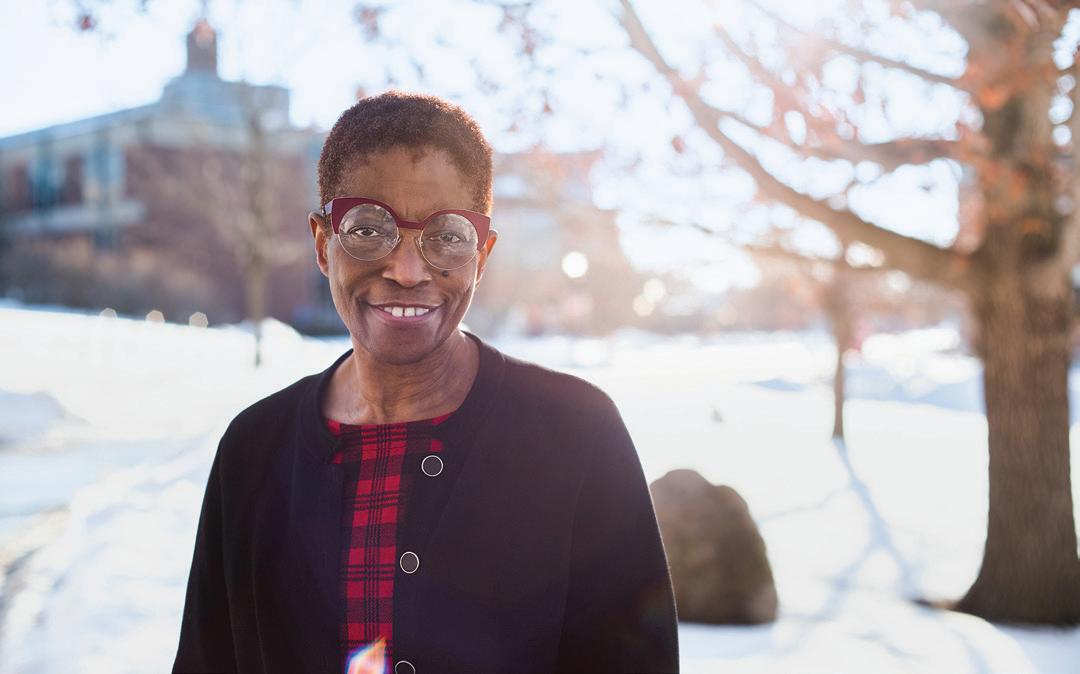
“The power of language is just amazing to me; how you can read a book or listen to a conversation and—even though you’ve not physically experienced it—through language, you are there.” On the surface, this is a mindset that might seem suited for a poet or novelist, but for Noma Anderson, the new dean of the College of Nursing and Health Sciences, it’s what drew her to a career in speech-language pathology. “Our wants, our needs, our thoughts are all expressed by language,” she says.
Anderson comes to Vermont from the University of Tennessee Health Center, where she served as dean prior to her appointment as special advisor to the president on diversity and inclusion. An expert in communication sciences and disorders and a leader in inclusive education and cultural and linguistic diversity, Anderson’s skill set is apt for tackling the challenges of the day. As she steps into her new role, we caught up with Anderson for a quick conversation about priorities and key experiences that have shaped her. Here are four things to know about the new dean.
As impressive as Helen Keller was, it was her teacher and lifelong companion Anne Sullivan that inspired Anderson as a child. “My mother was a teacher, so I was fascinated by who Helen Keller’s teacher was and who taught her to do all that—how to sign in people’s hands and for them to sign in hers, I wanted to know who taught her that,” she says. Though Anderson’s interest in communication disorders sparked early in childhood, it wasn’t until her first year at University of North Carolina at Greensboro that she considered a career in it. Her clinical expertise is in pediatric speechlanguage pathology and treating children with developmental disabilities.
She puts a premium on culturally competent patient care. “Racial health disparities are a major problem,” Anderson says, “and the communication between patients of color and health practitioners has not been the best—in fact, it’s been historically poor.” She notes that while the COVID-19 pandemic is exposing a truth that practitioners have known for decades, the need for health care professionals to meet their patients where they are—with understanding and effective communication—is vital. From where she sits, Anderson sees an opportunity for speechlanguage pathologists to become leaders by advancing cultural competency, a critical skill in their field, across all health and wellness specialties.
Her hallmark as a teacher, leader, and practitioner is building professional development in cultural and linguistic diversity. Grounded in an appreciation for the distinction between “disorder” and “difference,” cultural and linguistic diversity is an inclusive concept that Anderson first took up as an undergrad, at the encouragement of a professor. “He was a strong proponent of us understanding the differences—that dialects are not communication disorders; they are a linguistic variety of American English,” she says. It became a cornerstone of her teaching during her sixteen years at Howard University, a historically Black school in D.C., where she prepared students serving families of color to graduate with the resolve and expertise to advocate for their patients.
UVM’s values sealed the deal. Anderson was struck by a phrase in the first few sentences of the Amplifying Our Impact strategic vision. “‘Health’ was right there— ‘the health of our societies and the health of our environment,’” she recalls. A few paragraphs later into the university’s commitment to student success and action plans for inclusive excellence at every school and college, “I thought, this is a perfect fit for me. Their values are my values,” she says.
Strengthening the Grid
INNOVATION | As renewable energy sources increasingly factor into power grids worldwide, Packetized Energy, a start-up spawned by UVM research, has become a leading developer of software and smart devices that help utilities and consumers manage electricity demand.
Research collaborators and company co-founders are Mads Almassalkhi, Jeff Frolik, and Paul Hines, professors in the College of Engineering and Mathematical Sciences. This winter, Packetized was awarded $2 million from the California Energy Commission under their BRIDGE (Bringing Rapid Innovation Development to Green Energy) program. The award will create one of the largest distributed energy resource networks from residential devices in California.
“This is a really big step for us,” says Hines. “We already have eight projects across the country and one in Canada, but this will be our largest project to date.” With about a dozen employees based in Burlington, Packetized has a number of UVM alumni on the team.
Hines explains that the company’s key innovation is making the electricity grid work more reliably with large amounts of renewables like wind and solar. “The power grid was built for an older model, where you turned on a central coal or nuclear plant and it just ran. Wind and solar come and go when they want to, and that creates real challenges for running a power system that was designed around these older fossil fuel plants.”
While solar and wind have long held promise as sources of cleaner, cheaper energy, their ephemeral nature—solar panels collect energy only when the sun shines, and turbines are immobile when the wind isn’t blowing—doesn’t play well with the grid.
The genius of Packetized Energy is providing a “glue technology” that turns home appliances like water heaters, dryers, and H-VAC systems into systems of virtual batteries that can be coordinated at scale. The company produces smart controllers for these appliances and a cloud-based software platform called Nimble that “talks” with the controllers, simultaneously listening to demand requests and pricing data from utilities.
Hines says the technology helps consumer demand and utility output stay in balance. Wider adoption could help mitigate complete system meltdowns like Texas experienced this winter.
Packetized Energy’s overall mission is to “enable clean, affordable, resilient energy for all people,” and Hines sees a confluence of factors that make the company’s solutions the right set of ideas at the right time. One factor is the growing public consensus about the danger of global warming and the pressing need for clean energy solutions.
“The other factor is the commercial driver,” says Hines. “Wind and solar are just plain financially cheap, and you can build plants for purely economic reasons. That’s where you really see change. Now, Shell and BP are getting into the game, so it’s not just for ultra-green environmentalists. This is real business now.”


Portrait of the Artist
Fierce Poise: Helen Frankenthaler and 1950s New York Penguin Press By Alexander Nemerov ’85 In his latest book, alumnus Alexander Nemerov examines the life and work of twentieth-century painter Helen Frankenthaler across the decade when her art was emergent and at its most vibrant. Author and subject share some personal history rooted in Vermont. Nemerov was born in the state in 1963, when his father, poet Howard Nemerov, taught on the faculty at Bennington College. Helen Frankenthaler was among the elder Nemerov’s students during that era.
But beyond that distant connection, Alex Nemerov, chair of the Department of Art and Art History at Stanford University, did not dive deeply into Frankenthaler’s work until he stood before her 1958 painting “Hotel Cro-Magnon” at the Milwaukee Art Museum in 2016. He recalls gazing at it longer than all of the other works in the museum combined. Soon after, he wrote a piece that attempted to capture what had transfixed him.
Noting that Frankenthaler’s work is often celebrated for its freshness, Nemerov says, “What I understand that freshness to represent is the experience of life unfolding, what we call lived experience—seeing Lake Champlain change color, feeling our feet on the grass as we look at it, anything really, holding a warm cup of coffee in one’s hands. She was portraying life as lived and turning it into representation before it could become fossilized, petrified as a kind of semblance of itself.”
Fierce Poise has a personal feel to it, with Nemerov referring to the painter as “Helen” throughout. The author suggests that in addition to being about the artist, her art, and the heady swirl of life among the abstract expressionist era circle in New York City during the 1950s, the book is more broadly striving to capture the feeling of living through one’s twenties—Helen’s, his own, his students’s.
Writing a book based on story rather than argument is a departure for Nemerov, who, by his own estimate is “miscast as an arguer,” a challenging scholar to pigeonhole. “I’m more interested in creating a space for contemplation, which is a quasireligious space,” he says. “And that’s my definition of what I do as an academic.” He adds, with a laugh, that is why his books tend to have “truly bizarre call numbers.”
The opportunity for the new direction arose when a literary agent, who happened to be a fellow UVM alumnus, Elias Altman ’07, contacted Nemerov out of the blue suggesting he would be well-suited to writing a story-based book for a popular audience. In his cold call, Altman noted that they shared a UVM writing teacher in Professor David Huddle.
Nemerov had been contemplating a book about Frankenthaler, and, with Altman’s help, the course was set. The result is a book that will leave those fortunate to have been on the UVM Green for Alex Nemerov’s 2018 commencement speech with a similar sense of inspiration and connection to our own lives, born of the author’s keen eye, insightful mind, and verbal grace. On a rainy Sunday morning at UVM, Nemerov spoke to the essential nature of “private illuminations” that “allow us—carefully, tentatively, but sometimes with great power and purpose—to move through the world.”
In the introduction to Fierce Poise, considering not just Helen Frankenthaler’s life but all of our lives, the author proposes: “The moments of a day’s existence are often a homely combination: a pigeon waddling on the sidewalk, an overflowing trash can, the bright white shirt and black glossy hair of a passerby. Focused on bigger things, larger goals, we learn to ignore such ephemeral experiences. But who is to say that fragile sensations do not carry their own weight, that they do not amount to a rich record of who we are, who, indeed, we will have been?”
Timeless Lessons
Taking the Fight South: Chronicle of A Jew’s Battle for Civil Rights in Mississippi Notre Dame Press By Howard Ball In 1976, early in his career, Howard Ball landed an attractive offer for a tenure track position at a large state university. The only possible catch, it seemed, was that the professorship was at Mississippi State, a geographic and cultural leap for a young, Jewish, Bronx-born academic.
But Ball and his young family packed up the moving van. They would spend six years in Starkville, Mississippi, making waves, making a difference, making friends, and living to tell the tale nearly forty years later with the recent publication of Taking the Fight South: Chronicle of A Jew’s Battle for Civil Rights in Mississippi. UVM professor emeritus of political science and past dean of the College of Arts and Sciences, Ball is a noted historian, whose dozens of books include a landmark biography of Supreme Court Justice Thurgood Marshall, A Defiant Life, and Murder in Mississippi, which chronicles the Mississippi Burning killings of 1964. At age eighty-three, living in Richmond, Vermont, with his wife, Carol, a former UVM mathematics lecturer, Ball shares not only his academic expertise but also his own family life in the new book.
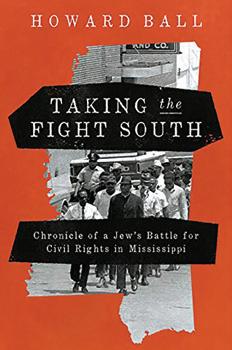
Taking the Fight South filters the political through the lens of the personal. Readers learn of Ball’s testimony before a congressional committee studying extension of the 1965 Voters Rights Act and his tireless advocacy work with the American Civil Liberties Union. There are stories about his kids and stories of a professor finding his way in a new academic environment. Perhaps less expected, a chapter on Ball’s work as a high school football referee, known to his crew as “Rabbi.” For an outsider in the Deep South, love of the game provided a ready bridge. A scholar has a natural bent towards documentation. And that’s what Howard Ball did through his six years in Mississippi—jotting down his experiences in a journal, saving press clippings and photos, filing them away with little thought to publication as other projects absorbed his time through the years. The stories would later coalesce as he shared them with friends at Ohavi Zedek Synagogue in Burlington and polished a manuscript.
Perhaps Taking the Fight South was just waiting for these times. The rise of Donald Trump triggered many things across our nation, among them, Professor Emeritus Ball’s desire to add his voice, shaped by his experience in Mississippi, to renewed calls for racial justice in America.
Healthy Eating, Healthy Earth
Sustainable Kitchen: Recipes and Inspiration for Plant-based, Planet-conscious Meals. Herald Press By Heather Wolfe ’03 “How I grew up was really influential,” says Heather Wolfe ’03 of her new cookbook, Sustainable Kitchen: Recipes and Inspiration for Plant-based, Planet-conscious Meals. A lifetime Vermonter, her roots begin in a log cabin built by her father near Woodstock, with composting toilets, and no electricity. “We lived really close to the land.”
Now a registered dietitian and certified health and wellness coach, still in the Woodstock area, she and her family maintain an environmentally-friendly flexitarian lifestyle—comprised of a plant-based diet with minimal waste—and of course, a gigantic garden. With photography and design by friend Jaynie McCloskey, Sustainable Kitchen was a two-and-a-half-year passion project for Wolfe that combines healthy eating and sustainable living tools, farm-to-table recipes, and a manual for making sense of it in our everyday lives. Taste-test the book with the recipe below.
SPRING VEGGIE & PESTO PASTA (Serves 4) Nothing says spring like bright, fresh shades of green. Here we’ve got asparagus, arugula, peas, and pesto, the first tastes of the season. Serve warm or as a cool salad.
8 ounces pasta, any variety 1 (8-ounce) bunch asparagus, trimmed and cut into 1-inch pieces (about 2 cups) 1/2 cup fresh or frozen peas 1 1/2 cups cooked cannellini beans 1/2 cup chopped roasted red peppers 1/2 cup classic basil pesto kosher salt & freshly ground black pepper freshly grated Parmesan cheese for garnish a few handfuls arugula (optional)
1. Cook pasta, adding asparagus and peas to the pot to boil for the last 3 minutes of cooking. Drain and return to pot. 2. Mix in beans, roasted red peppers, and pesto. Stir gently over low heat until beans are warmed and sauce evenly coats pasta. 3. Season to taste with salt and pepper and top with freshly grated Parmesan cheese. 4. If desired, add a handful of arugula over the top or under as a bed for extra spring greens.

BOOKS |
BRIEFS |
Kimberly Zieselman’s 2020 memoir XOXY delves into her discovery later in life that she was born intersex, leading to the Class of 1988 alumna’s work as a human rights activist. Professor Emeritus Robert Manning and his wife, Martha, have added a new edition to their series of Walks of a Lifetime books, guides to spectacular hikes that can be tackled by mere mortals. Walks in America’s National Parks are the focus for the intrepid Mannings this time out.
Ed Tracy ’76 recently published Gorilla in the Room and Other Stories, a work inspired by his battle with cancer that follows multiple directions, including memories from his undergrad years. In early January, Lesléa Newman ’77 published I Wish My Father, a memoir-in-verse. Newman’s poem, “Thirteen Ways of Looking at Life Before the Virus,” which we shared in the summer issue of the magazine, was nominated for a Pushcart Prize.
Wolfgang Mieder, University Distinguished Professor of German and Folklore, adds to his deep catalog of books with The Worldview of Modern American Proverbs.










